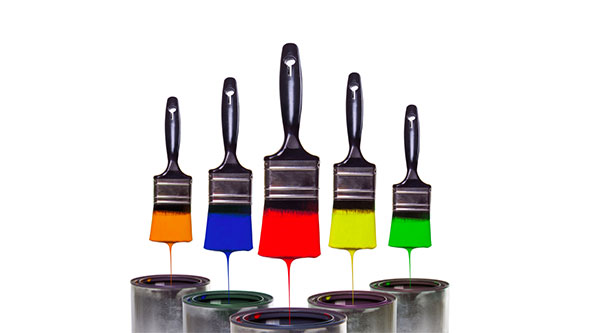Latex Painting Safety Tips
As we continue our too-fast cruise through fall, house painting is the focus for many homeowners, particularly for those looking to place their home for sale during the robust upcoming winter market. Whether you are painting your home yourself or are a house painting contractor, we at VelocityEHS would like to share some information with you about utilizing latex paint safely.
What is Latex?
Latex is a natural milky emulsion found in all flowering plants, including trees; its function in the natural world is to act as protection against plant-eating insects. Latex is a complex compound consisting of resins, alkaloids, proteins, starches, sugars and oils.
A Little History on Latex Paint
Latex paint (also known as acrylic) was created in the 1940s with a resin from the rubber tree. It became a quick success, as latex paint is water-based, and as a result, washed off easier and cleaner versus other paints. However, latex paint had a few problems over the years, such as containing mercury as part of its overall components, and, prior to 2005, creating air pollution problems and exacerbating respiratory illnesses such as asthma due to a coalescent in the paint that helped it dry more quickly.
However, since 2005, great strides have been made toward making latex paint greener, cleaner and much better for the environment.
Latex Paint Ingredients
The main ingredient in latex paint is water, followed by latex resin, pigments and fillers that combine to create latex paint. Latex resin can be both synthetic (man-made) and natural; it is estimated that about 10% of latex resin used in products is developed naturally. Some outdoor paints may have specially-added compounds to make it more weather-resistant.
Healthy Painting with Latex Paint for Both Homeowners and Contractors
While latex paint is one of the safest types of paint available, you should still take certain precautions with it, particularly with indoor painting. Here are some tips to make your latex painting healthier:
Safety Before Painting with Latex
- Check for lead paint using lead-safe methods if your home is more than 20 years old
- Choose a low-toxicity paint – look for low volatile organic compounds (VOCs). These are oil-based petroleum products. Ask your paint store for assistance.
- Read all paint labels carefully as even ones categorized as low-toxicity can contain VOCs. Also make sure you choose indoor latex paint for indoor jobs, not outdoor paint.
- Try to avoid spray painting indoors, particularly with spray cans
- Turn off all air conditioning/HVAC units and cover with plastic as these units cannot filter latex paint vapors
Safety During the Latex Painting Process
- Wear protective gear such as gloves, goggles and filtered respirators. Dust masks are not considered protective gear as they do not filter out latex paint’s vapors
- Pregnant women and children should not be around freshly-painted areas
- Make sure windows are open for air flow, and if possible, use a fan backwards in a window to act as an exhaust system
- Step outside for fresh air frequently while painting with latex
Safety After Painting with Latex
- Save a small amount of paint used to accommodate for future touch-ups
- Allow newly-painted area to dry and air for 2-3 days after painting
- Latex paints emit vapors for 2-3 days after painting, even when dry; therefore, keep children, pregnant women and those with respiratory ailments out of the area during this time
Safe Storage of Latex Paints
Storing your latex paint can save money, especially if you are a commercial painting business, but only if you do it correctly. When storing any latex paint, make sure the storage area is cool and dry, and can maintain a consistent temperature year-round. To ensure that the paint doesn’t dry in the can, place plastic wrap on the paint surface and close the can lid tightly. You can also close the lid securely and store upside down creating an airtight seal and allowing paint pigments to collect at the top of the can instead of at the bottom, making mixing easier.
Disposal of Latex Paints
Latex-based paints are far easier to dispose of, particularly for homeowners. One thing to note, however, is that your local waste management facility may not take liquid latex paint for disposal, so you’ll want to check that before hauling a load over.
Homeowner Latex Paint Disposal
There are three easy ways to dispose of household latex paint:
- Take off the lid, let the paint dry and dispose in your regular garbage. NOTE: certain states do not allow for this; make sure you know your state’s laws on this before engaging.
- Pour extra paint onto newspaper, let it dry, then dispose of the newspaper in the regular garbage
- Mix leftover paint with cat litter, saw dust or a commercial paint hardener in a double-lined plastic bag and then dispose in your regular recycling
Safe Commercial Latex Paint Disposal
As a painting business or contractor, you’ll want to look into latex paint recycling companies for proper disposal of your leftover latex paint. You can also look into passing on your unused paint to charities and non-profits. Work with your local waste management company in order to create the best latex paint disposal for your painting company.
Whether you are a painting contractor or a homeowner doing a DIY job, latex painting safety is very important. For more information on latex painting use, safety and disposal, search our database of SDS information.
